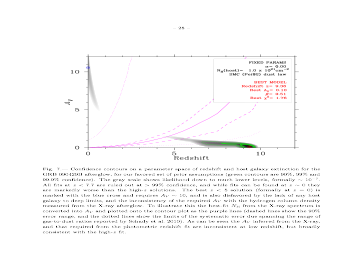GRB 090429B



GRB 090429B
This Gamma-ray Burst was discovered by the Swift satellite in the night of April 29, 2009. His emission
in the gamma energy range lasted only 5.5 seconds and its X-ray afterglow disappeared in matter of few days.
Our group requested immediately after the explosion follow-up observations from the Gemini telescope situated in Hawaii. Optical and near-Infrared data shows a clear afterglow in the near-IR, but not in the bluer filters (see figure below).

Gemini i’,z’ and H bands composite image

Following the first night discovery we performed another K band, near infrared observation, discovering that the afterglow faded significantly. Unfortunately we were able to obtain a spectrum, due to its faintness.
We perform several statistical tests and obtained a photometric redshift of z ~ 9.4.
This analysis allows us to infer that the host galaxy of GRB 090429B contain very little dust, such to suppress the optical flux of the afterglow. On the other hand, a small probability that the host galaxy was a very dusty one at redshift very close to zero could not be excluded (see contour plot on the left).

In order to exclude the low-redshift probability we obtain deep Hubble Space Telescope images.
No host galaxy could been found, allowing us to rule out at 99.3% the possibility that this object was a low redshift as z < 7.7 (90%).
Go to the paper on ArXiv: Cucchiara et al. 2011
GRB 090429B in the news (thanks to Penn State Public Relation, Barbara Kennedy):
- Penn State College of Science official Press Release
Special thanks: Nial Tanvir (U. Leicester, UK), Andrew Levan (U. Warwick, UK), Derek B. Fox (Penn State)